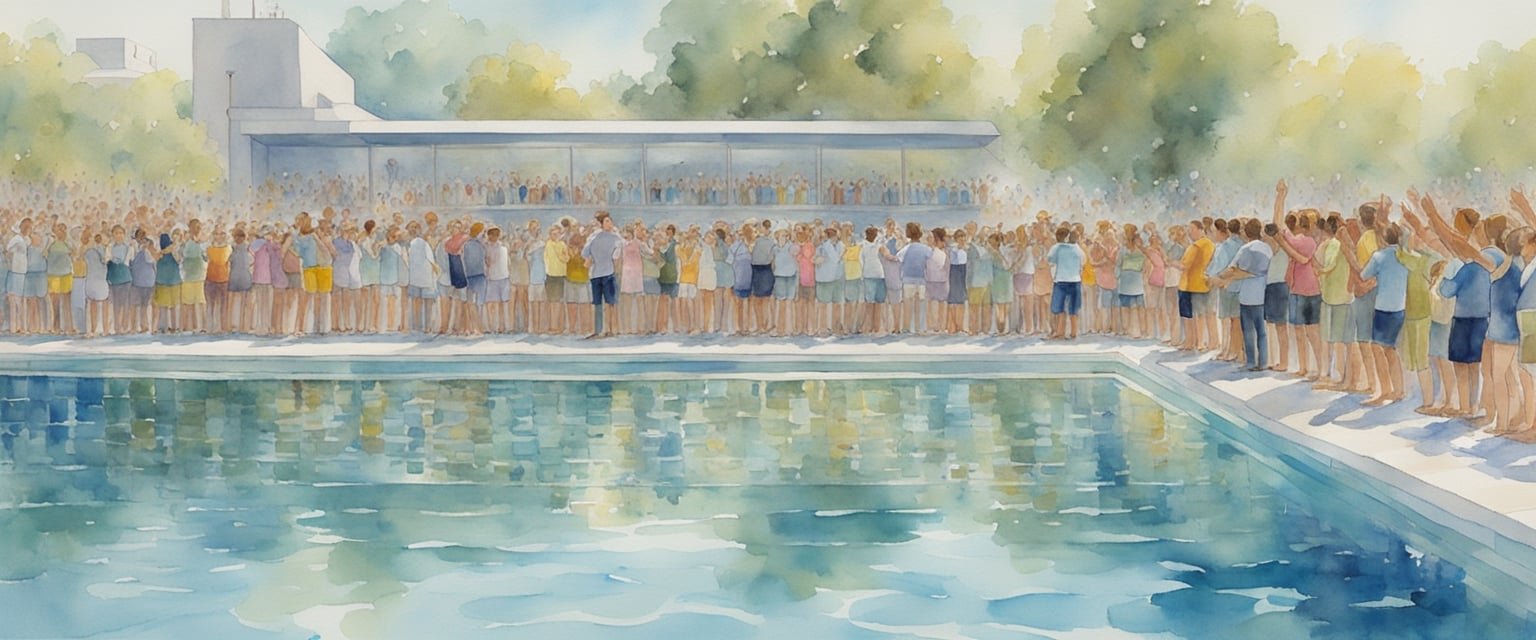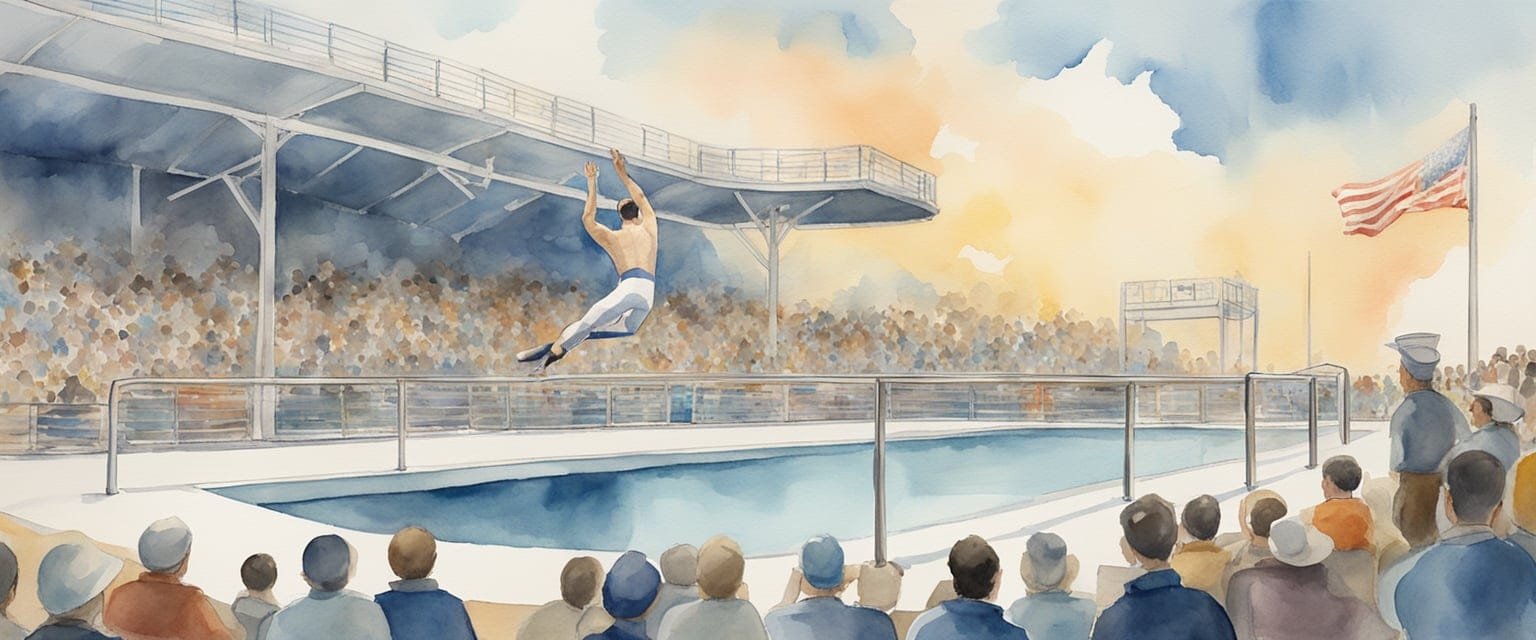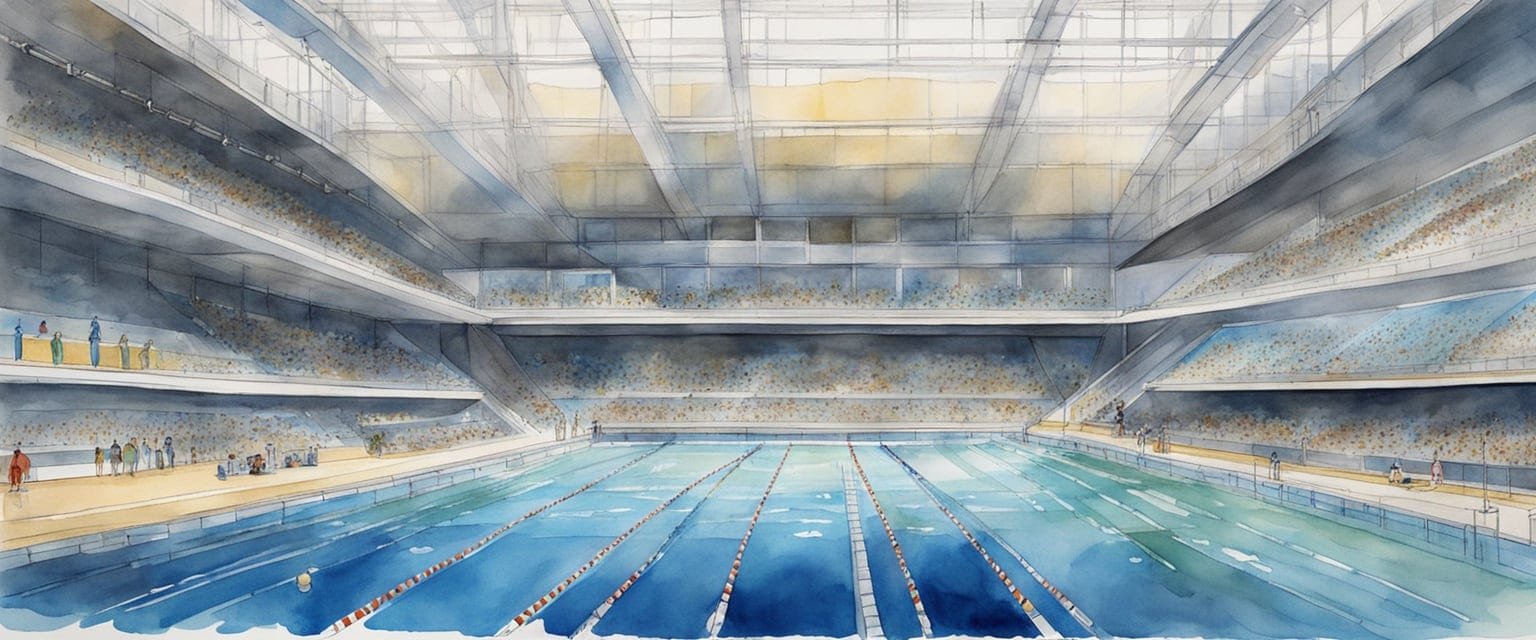Diving into the world of Olympic Diving is both thrilling and inspiring. As I explore this sport, I find the combination of athleticism, artistry, and precision truly captivating. In this ultimate guide to Olympic Diving, I will break down the history, rules, and key techniques that define this remarkable sport, especially as we look forward to the 2024 Paris Olympics.

From watching skilled athletes perform stunning dives to understanding the judging criteria that determines winners, there is so much to appreciate about Olympic Diving. I want to share my insights and knowledge to help you better understand what makes this event so special. Whether you’re a new fan or have enjoyed diving for years, I believe this guide will enhance your experience.
As we get closer to the Paris 2024 Games, it’s exciting to see how this sport continues to evolve. I’ll cover important moments and tips that will help you enjoy every dive during the competition.
Key Takeaways
- Olympic Diving combines skill and artistry in a highly competitive setting.
- The 2024 Paris Olympics will showcase top divers from around the world.
- Understanding the rules enhances the viewing experience for fans.
History of Olympic Diving
I find the history of Olympic diving to be fascinating. It reflects not just the evolution of the sport but also changes in culture and athletic performance over the years. The journey from its early days to current events shows how diving has grown into a beloved Olympic competition.
From Tokyo to Paris
Diving made its Olympic debut at the 1904 St. Louis Games but gained significant recognition during the Tokyo Olympics in 1964. This was a pivotal moment because it showcased diving on an international stage. The introduction of synchronized diving at the 2000 Sydney Olympics marked another milestone, allowing pairs to perform together, adding complexity and artistry.
As I watch the preparations for the Paris Games in 2024, I can’t help but marvel at how far the sport has come. The athletes today perform stunts that were unimaginable in the past.
Notable Olympic Divers
Some divers have truly shaped the sport. Greg Louganis, a standout from the 1980s and 1990s, is remembered for his grace and technical skill. He won four gold medals over two Olympics.
Another icon is Plymouth’s Tom Daley, who captured gold at the 2021 Tokyo Olympics. His dedication and personality have inspired many young divers.
Other greats include Diving Duo Wu Minxia and He Zi, who won multiple golds for China. Their achievements demonstrate the level of talent and commitment that defines Olympic diving.
Evolution of Diving Events
Diving events have evolved significantly since their inception. Initially, there were only two events: springboard and platform. Now, both men and women compete in several categories, including individual and synchronized events.
The transition to synchronized diving helped introduce new techniques and teamwork into the sport. This evolution not only enhances the competition but also makes it more entertaining for audiences.
I appreciate how the scoring system has also advanced. Judges evaluate dives on execution, difficulty, and synchronization, ensuring that every performance is carefully assessed. This changing landscape highlights the growing complexity and artistry in Olympic diving.
Understanding the Sport
Olympic diving is an exciting sport that combines skill, precision, and artistry. It includes different events and categories, each with unique rules and scoring systems. I’ll break down the main disciplines and how divers are judged to give you a clear picture of this thrilling competition.
Diving Disciplines Explained
Diving consists of two main disciplines: individual diving and synchronized diving.
Individual Diving: This involves a single diver performing a series of dives. Each diver has to showcase multiple dives, which can vary in height and complexity.
Synchronized Diving: Here, pairs of divers perform in unison. They must execute their dives as similarly as possible to impress the judges.
Each discipline has its intricacies, requiring athletes to train for years to perfect their techniques and dive styles. The event’s uniqueness makes it exciting for both participants and spectators.
Diving Events and Categories
Olympic diving has several events, each challenging divers in specific ways.
Springboard Diving: This event features dives from a flexible springboard, usually 3 meters or 1 meter high.
Platform Diving: Divers leap from a fixed height, typically 10 meters.
Synchronised Events: Both springboard and platform events have synchronized categories where pairs perform together.
In each event, divers must complete a set number of dives, which can include twists and flips. The variety in events showcases the athletes’ versatility and skills.
The Scoring System
Diving judges play a crucial role in determining the final scores for each dive.
Degree of Difficulty: Each dive is assigned a degree of difficulty based on its complexity. This affects the final score.
Judging Criteria: Judges evaluate several factors, including the diver’s entry into the water, take-off technique, and overall execution. They score on a scale from 0 to 10, removing the highest and lowest scores for an average.
This scoring system encourages divers to perform their best, pushing the limits of what’s possible in the sport. The judges’ focus on precision makes every dive a thrilling spectacle.
Rules and Regulations

In Olympic diving, there are specific rules and regulations that guide both individual diving and synchronized events. Understanding these is crucial for both participants and fans. Let’s dive deeper into the individual requirements, synchronized diving specifics, and the scoring criteria used by judges.
Individual Diver Requirements
For individual diving, competitors must meet certain eligibility standards. Divers need to be registered with their national governing bodies. They also must pass any qualifying rounds leading to the Olympics.
Each diver performs a set number of dives, typically six, with a mix of different styles and levels of difficulty. The dives are evaluated based on the Degree of Difficulty, which impacts their overall score.
Before competing, divers should also check that their equipment meets the regulations. Compliance ensures that everyone plays by the same rules, maintaining a fair competition.
Synchronized Diving Specifics
Synchronized diving pairs two divers who perform the same dive simultaneously. This event requires not only individual skill but also strong teamwork. The divers are expected to match their movements closely in terms of timing and execution.
Judges pay special attention to their synchronized movements, as any discrepancies can lead to point deductions. Each team generally performs five dives, and judges assess both the execution and synchronization aspects separately. Clubs and teams should practice in unison to achieve the best scores.
Scoring Criteria and Judgement
Diving scores range from 0 to 10 and are awarded by a panel of seven judges. Each judge evaluates based on specific scoring criteria that include:
- Execution: How well the diver performs the dive.
- Degree of Difficulty: The complexity of the dive.
- Entry: The form and splash upon entering the water.
To calculate the final score, the highest and lowest scores from the judges are dropped. The remaining scores are added together, and the total is multiplied by the dive’s degree of difficulty. This scoring formula gives a clear and fair assessment of each dive.
Understanding these regulations enriches my appreciation of the sport. It shows just how much skill and precision go into each performance!
Athletes and Competitions
In the world of Olympic diving, athletes play a vital role in shaping the sport. This section dives into profiles of notable divers, the rising stars heading into Paris 2024, and insights into their rigorous preparation and training.
Profiles of Prominent Divers
I admire many remarkable divers, both men and women, who have made a significant impact in recent years. Athletes like Kassidy Cook and Tyler Downs stand out for their skills and dedication. Kassidy has excelled in both individual and synchro events, showcasing her versatile talent. On the men’s side, Andrew Capobianco, a skilled platform diver, displays power and precision in his dives. I find the dedication of these athletes inspiring as they push boundaries and consistently aim for the gold.
Olympic Hopefuls for Paris 2024
Looking ahead to Paris 2024, a new generation of divers is emerging. Delaney Schnell is one athlete to watch; she has shown incredible potential in her competitive years. I’ve followed her journey, and her performances suggest she’s on track for great things. Meanwhile, Tyler Downs aims to solidify his position as a top contender in both individual and synchro events. I’m excited to see how these hopefuls will compete against seasoned veterans in the quest for Olympic glory.
Preparation and Training
The preparation for Olympic diving is intense. I have read that athletes engage in a mix of physical conditioning, technical practice, and mental training. Divers typically follow a structured routine that includes strength training, flexibility exercises, and diving drills. It often involves two to three training sessions a day.
In addition to physical conditioning, mental focus is crucial. Divers work with sports psychologists to enhance their concentration and manage performance anxiety. This combination of physical and mental training helps athletes perform successful dives under pressure. The journey demands hard work and resilience, but the thrill of competition makes it all worthwhile.
Olympic Diving Schedule

I want to share important information about the Olympic Diving schedule for the Paris 2024 Games. This includes key event dates, how to catch the live coverage, and details on the competition format.
Key Dates and Events
The diving events at the Paris 2024 Olympics will take place from July 27 to August 10. During this time, I can look forward to multiple exciting competitions.
Some of the key events include:
- Men’s 3m Springboard
- Women’s 3m Synchronised Springboard
- Men’s and Women’s 10m Platform
These events will showcase the top talent from around the world, including many athletes from the powerhouse diving team of China.
Live Coverage Information
For those who want to watch the diving live, it will be available on NBC and Peacock.
I can enjoy live broadcasts on E! as well. Coverage will begin with preliminary rounds, leading into the finals.
NBC has an excellent reputation for covering the Olympics, so I can expect high-quality streaming and commentary. Check local listings for exact times.
Competition Format and Stages
The diving competition has two main stages: the preliminary rounds and the finals.
In the preliminary rounds, divers will perform a set of dives based on their respective events. The top scores will advance to the finals.
During the finals, divers will compete for medals, showcasing both skill and artistry.
This format adds excitement and tension, making it thrilling to watch. With divers from many countries, I expect plenty of surprises and outstanding performances!
Venue and Infrastructure

The venues for Olympic diving are essential to the experience for both athletes and spectators. In Paris 2024, the Aquatics Centre will feature state-of-the-art facilities for divers, making it an exciting venue for the competition.
Paris 2024 Aquatics Centre
The Aquatics Centre in Paris will be the main venue for diving events. This stunning facility is designed to host various water sports, including artistic swimming, water polo, and diving.
The competition will take place between July 27 and August 11. The centre will be located in Saint-Denis and built with sustainability in mind.
It will be a key facility for the Paris Games, showcasing modern design and eco-friendly features. The use of natural resources and energy-efficient systems will minimize environmental impact while providing top-notch conditions for athletes.
Features of a Modern Olympic Pool
A modern Olympic diving pool has several specific features to ensure the best performances.
First, the pool must meet official dimensions of at least 5 meters in depth, allowing for safe landings from heights. The water temperature is kept around 25°C for comfort.
Additionally, the pool is equipped with “springboards” and high platforms ranging from 1 to 10 meters. These elements provide divers with various heights to perform their routines while water depths are checked regularly to ensure safety.
The rigorous design provides a world-class atmosphere where athletes can showcase their skills confidently.
Athlete Facilities
To support elite athletes, the Aquatics Centre offers top-notch facilities. There are designated warm-up areas where divers can practice their routines before competition.
Additionally, there are spaces for recovery, including massage rooms and relaxation zones, ensuring that divers are physically and mentally prepared.
The centre also features spacious locker rooms and viewing areas for coaches and support teams. Such facilities enhance the overall experience and performance of athletes, making it a vibrant and supportive environment.
By providing all these features, the Aquatics Centre aims to create an unforgettable experience during the Paris 2024 Olympic Games.
Diving Techniques and Tips
In my experience, mastering diving involves understanding specific techniques and avoiding common pitfalls. It also requires a focus on both mental strength and physical conditioning to consistently perform at a high level.
Executing the Perfect Dive
To execute the perfect dive, I start with a strong takeoff. My feet should be positioned shoulder-width apart on the edge of the board. As I jump, I extend my legs and keep my arms straight above my head.
While in the air, I focus on my body position. A straight position is great for improving my score. My aim is to enter the water with minimal splash, which is marked by judges.
Dives have a Degree of Difficulty score, which can elevate my overall performance. A well-executed dive can be rated as Good, Very Good, or Excellent, while errors might lead to Satisfactory, Deficient, or even Unsatisfactory ratings.
Common Diving Mistakes
I’ve learned that common mistakes can derail a dive. One huge error is poor takeoff. If I don’t push off the board correctly, it affects my height and rotation.
Another mistake is losing my body position in midair. If I bend my legs or twist my body unexpectedly, judges will note that.
Finally, entering the water improperly can result in a Completely Failed dive. A splash signals that I didn’t control my entry. Paying attention to these common mistakes helps me improve with every dive.
Mental and Physical Conditioning
Both mental and physical conditioning are crucial to my success in diving. Physically, I focus on strength, flexibility, and balance through regular workouts. Core exercises help me maintain good body control during my dives.
Mentally, I practice visualization techniques. I picture myself completing each dive successfully. This helps me manage nerves before competitions.
Breathing exercises also ground me. They keep me focused, reducing anxiety right before I dive. Combining these elements has made a significant difference in my confidence and performance.
Reflecting on the Competitions
As I think back on the Olympic diving competitions, it’s fascinating to see the journeys of the athletes. Their achievements and the techniques they use shape the sport. There’s also the excitement of reliving these moments through coverage and replays.
Medal Tallies and Success Stories
The medal tallies tell incredible stories. Countries like China have consistently dominated, winning numerous gold medals in diving. During the last Olympics, Chinese divers showcased outstanding performances, particularly in the men’s and women’s events.
The United States also had impressive successes, grabbing several silver medals and even a few golds. Each medal won reflects the hard work and dedication of these athletes. I love following these stories to appreciate their effort and resilience on the international stage.
Analysis of Diving Techniques
Diving requires precision, skill, and elegance. It’s amazing to analyze the techniques athletes employ when they compete. From the approach to entry, every aspect matters.
For example, during the high dive, divers use a specific technique to maximize their height and rotation. Their body position in the air is crucial for a clean entry into the water. I often find myself amazed at how each diver seems to soar effortlessly.
Coaches play a vital role in helping divers perfect their skills. They focus on details like angle and form, leading to better results and fewer mistakes.
Post-Event Coverage and Replays
After the competitions, the coverage plays a huge role in keeping the excitement alive. I enjoy watching replays to analyze the dives in detail.
Major networks provide highlights and breakdowns of key moments. Watching the slow-motion playbacks lets me appreciate the skill further. I often see things I missed during the live event.
These replays help fans understand scoring and judging better, especially when it comes to close calls. They often spark discussions among fans about the athletes’ performances and the outcomes.
Frequently Asked Questions
I often get asked some common questions about Olympic diving. These cover everything from pool dimensions to training routines. Let’s dive into these details!
What are the official dimensions of an Olympic diving pool?
An Olympic diving pool must be at least 25 meters long and 20 meters wide. The depth of the pool is vital to ensure safety during dives.
How high is the diving platform in Olympic competitions?
In Olympic competitions, the diving platform is usually set at 10 meters high. This height is particularly challenging for divers and requires significant skill.
Why do divers shower immediately after their dives during the Olympics?
Divers shower after their dives to warm up and remove any water from their bodies. This helps them prepare for their next dive.
What is the required depth for a pool to be suitable for Olympic diving events?
The minimum depth for a diving pool in the Olympics is 5 meters, or about 16.4 feet. This depth is crucial for safety as divers enter the water at high speeds.
How many hours a day do Olympic divers typically train?
Most Olympic divers train around 4 to 6 hours a day. Their training includes both diving practice and physical conditioning.
What are the principles behind the physics of diving into a pool?
Diving involves understanding gravity, momentum, and body positioning. Divers use these principles to control their entry and achieve better scores in competitions.

